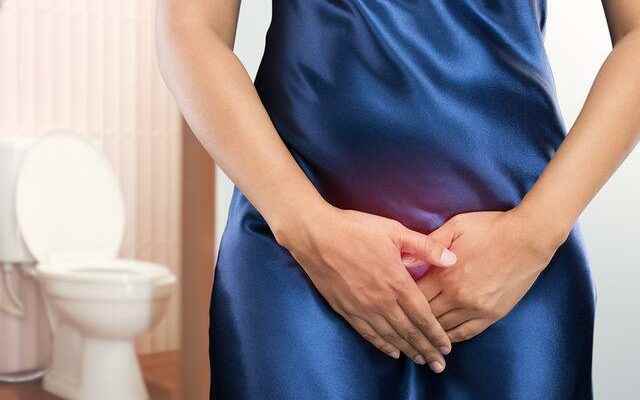Urinary incontinence is one of the most common health problems. There are multiple causes of urinary incontinence. Among these, there are the causes of congenital urinary incontinence, later developing, weakening of the pelvic floor muscles due to difficult births. Urinary incontinence causes psychological and social problems in the person. Those who have urinary incontinence problems prefer to find instant solutions instead of treatment. This leads to a restriction in their quality of life. From Memorial Bahçelievler Hospital, Department of Obstetrics and Gynecology, Op. Dr. Emine Barın gave information about urinary incontinence and prevention methods in women.
IT CAN BE SEEN NOT ONLY IN OLD AGES, BUT ALSO IN YOUNG GIRLS
Urinary incontinence, the frequency of which increases gradually after the age of 30, is seen in almost 1 out of every 3 women. However, this problem, which can be seen not only in older girls, but also in young girls; It causes women to restrict themselves from social life due to reasons such as odor and hygiene. Urinary incontinence, which usually occurs in advanced ages due to organ prolapse, frequent and difficult births, and smoking, can also be experienced due to genetically congenital weakness of the pelvic floor muscles. The prevalence of the problem leads to a significant increase in the use of specially produced urinary pads for women.
THERE ARE 3 MAIN TYPES OF URINE INCONTINENCE

Stress urinary incontinence: Stress in this group is not psychological stress. It is urinary incontinence in stress situations such as coughing, sneezing, straining, and heavy lifting that increase intra-abdominal pressure. It is a type of incontinence that occurs with the deterioration of the angle between the bladder and the external urethra, that is, the urethra. Generally, there is sagging in the uterus and urinary bladder.
Urge type (urge) incontinence: In this group, there is urinary incontinence that develops suddenly when the bladder is full or empty and before reaching the toilet. Especially the sound of water (eg washing dishes), cold drinks or exposure to cold can trigger this condition. In this situation, which can occur unexpectedly, even during sleep, there may be drip or excessive urinary incontinence.
Mixed urinary incontinence: In these patients, both stress-type and impingement-type abduction coexist.
SUGGESTIONS TO SOLVE YOUR URINARY INCONTINENCE

- Life and diet should be changed. A Mediterranean diet should be adopted.
- If there is obesity, weight should be lost.
- Since smoking has a negative effect on the pelvic floor muscles, it should definitely be stopped in patients with urinary incontinence problems.
- It is essential for patients who are suitable for normal delivery at birth, but if there is a compelling indication, extremely challenging procedures during normal delivery should be avoided. It should not be forgotten that the thing that puts the most stress on the pelvic floor muscles is multiple and difficult births.
- Smoking, tea and coffee consumption should be reduced. Caffeine triggers the problem of urinary incontinence due to the contraction and diuretic effect of the substance called diuretic in the content of the bladder muscles.
- Fluid consumption above normal should be limited.
- Pelvic floor exercises should be practiced. The most well-known of these exercises are kegel exercises, also known as finger exercises. If the patient is unable to exercise, pelvic toner can be applied to strengthen these muscles by stimulating them with electrical simulation and activating the muscles.
IF THESE SUGGESTIONS DO NOT SOLUTION, THE TREATMENT PROCESS SHOULD BE STARTED
The treatment process is started in patients who do not respond to these lifestyle changes, which are recommended for women with urinary incontinence.

Compression type and mixed type urinary incontinence problem If there is no response to these measures, drug therapy is applied in patients who are alive.
The group of patients who benefit most from the surgical method is the group of patients with stress-type and mixed-type urinary incontinence problems. In this group of patients, a voiding test called urodynamics is sometimes applied before surgery. Urodynamic test is especially applied in complicated patients who have previously been treated for urinary incontinence. This test is not applied in stress-type urinary incontinence. Afterwards, the surgical treatment process is planned.

Trans Obturator Tape (TOT) If the patient has sagging in the urinary bladder during the surgical procedure called, it is restored. It is one of the most frequently performed surgeries. The patient is discharged on the same day or 1 day later, depending on his condition, and returns to his daily life.
SUCCESS IS 90 PERCENT
The success of this surgery reaches 90 percent, especially in stress and mixed types. When TOT and TVT operations are not suitable for the patient, laparoscopic or sling operations with abdominal incision are preferred. In summary, if the right technique is chosen for the right patient, it is possible to get rid of urinary incontinence at a rate of up to 90 percent. It is recommended that patients who have urinary incontinence problems should be examined by a good obstetrician who deals with urogynecology.
